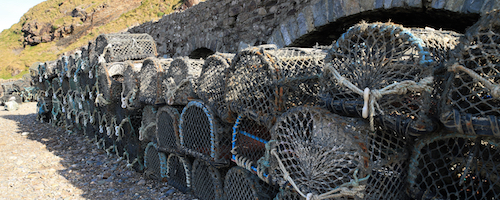Into History Through Food
Published: 24 July 2022
Food, says Antonia, is a fantastic way to access history in an authentic, engaging way. Because eating, drinking, sleeping, etc. are things that everybody experiences, they can be used as points for connection between visitors and the people who inhabited historical properties in the past.
![Tenement House, National Trust for Scotland [ https://www.nts.org.uk/visit/places/the-tenement-house ] Image of a historical tenement kitchen](/media/Media_861834_smxx.jpg) Antonia Laurence-Allen, who is Regional Curator for Edinburgh and East at the National Trust for Scotland (NTS), thinks food is important to visitor experiences because it has “functioned in everybody’s life since the dawn of time”. With a background in art and photographic history, Antonia has worked in museums, art galleries and historical properties and is interested in the interpretation of objects. Within the NTS, Antonia supports the research, exhibitions, ideas and strategies that go into visitor experiences. She views historical properties as particularly rich places to create authentic experiences of history. Spaces like kitchens and bedrooms can be used display the art and architecture that were pertinent to different time periods, giving a real sense of what daily life was like for families in the past.
Antonia Laurence-Allen, who is Regional Curator for Edinburgh and East at the National Trust for Scotland (NTS), thinks food is important to visitor experiences because it has “functioned in everybody’s life since the dawn of time”. With a background in art and photographic history, Antonia has worked in museums, art galleries and historical properties and is interested in the interpretation of objects. Within the NTS, Antonia supports the research, exhibitions, ideas and strategies that go into visitor experiences. She views historical properties as particularly rich places to create authentic experiences of history. Spaces like kitchens and bedrooms can be used display the art and architecture that were pertinent to different time periods, giving a real sense of what daily life was like for families in the past.
Food in Historic Properties
Food, says Antonia, is a fantastic way to access history in an authentic, engaging way. She thinks that “one of the best ways into history is through a relatable process like eating, drinking, sleeping, going to the toilet, and the basic shelter and security that people need”. Because these are things that everybody experiences, they can be used as points for connection between visitors and the people who inhabited historical properties in the past. Antonia is interested in ways of bringing a tangible sense of life into the properties she oversees. “When you enter a kitchen you should feel the heat, and smell meat and bread” she says, and she is trying to fund unique ways of bringing out those qualities. Integrating a multi-sensory level into displays can be done by using sounds and smells.
Antonia also wants to highlight the links that food established between different parts of properties like the garden, estates, dining rooms, and bedrooms. Food can also be used to open the world of the past outside the walls of NTS properties. Antonia wants to uncover the whole network of “producing, transporting and bringing food into the house, trading, storing, preparing, carrying around house, serving and then eating”. She would like to have a “map” of this culinary cycle for each of the Trust’s properties. This could be used to take visitors on a journey of the entire process, enriching their historical understanding.
![Hill of Tarvit, National Trust for Scotland [ https://www.nts.org.uk/visit/places/hill-of-tarvit-mansion ] Traditional kitchen NTS](/media/Media_861835_smxx.jpg) Research and Heritage
Research and Heritage
Academic research is absolutely vital to the NTS’s work, says Antonia. One of the things she has been working on over the past year is a Research Strategy. This consists of building a network to show what people are studying within universities that can help fill gaps in the NTS’s knowledge. She thinks this is where the Catalyst will be useful. “It’s frustrating,” she says, “I know there’s excellent research being done out there, but we need to make sure we know what we don’t know”. She cites Lindsay’s work with Gladstone’s Land as an example of how research can help the NTS fill gaps and create authentic representations. By mapping active and relevant research on food history in Scotland, NTS can build symbiotic relationships with academic partners that will simultaneously augment the visitor experience and draw attention to the value of academia.[ALA1] Not only will this improve things for researchers, visitors, and heritage organisations, but it can be a valuable educational tool for our current time. Antonia notes that food practices in the past were often more sustainable in terms of locality, carbon footprint, and waste. Identifying the gaps in our knowledge of Scottish food history and then filling them, can illuminate “the whole food process”.
Do you work in the Scottish food industry or have interests in Scottish food history? If you are interested in any of the aspects of food discussed here and would like to be involved in this Catalyst, get in touch by emailing Fraser Rowan at Fraser.Rowan@glasgow.ac.uk
First published: 24 July 2022
<< Food Blog


